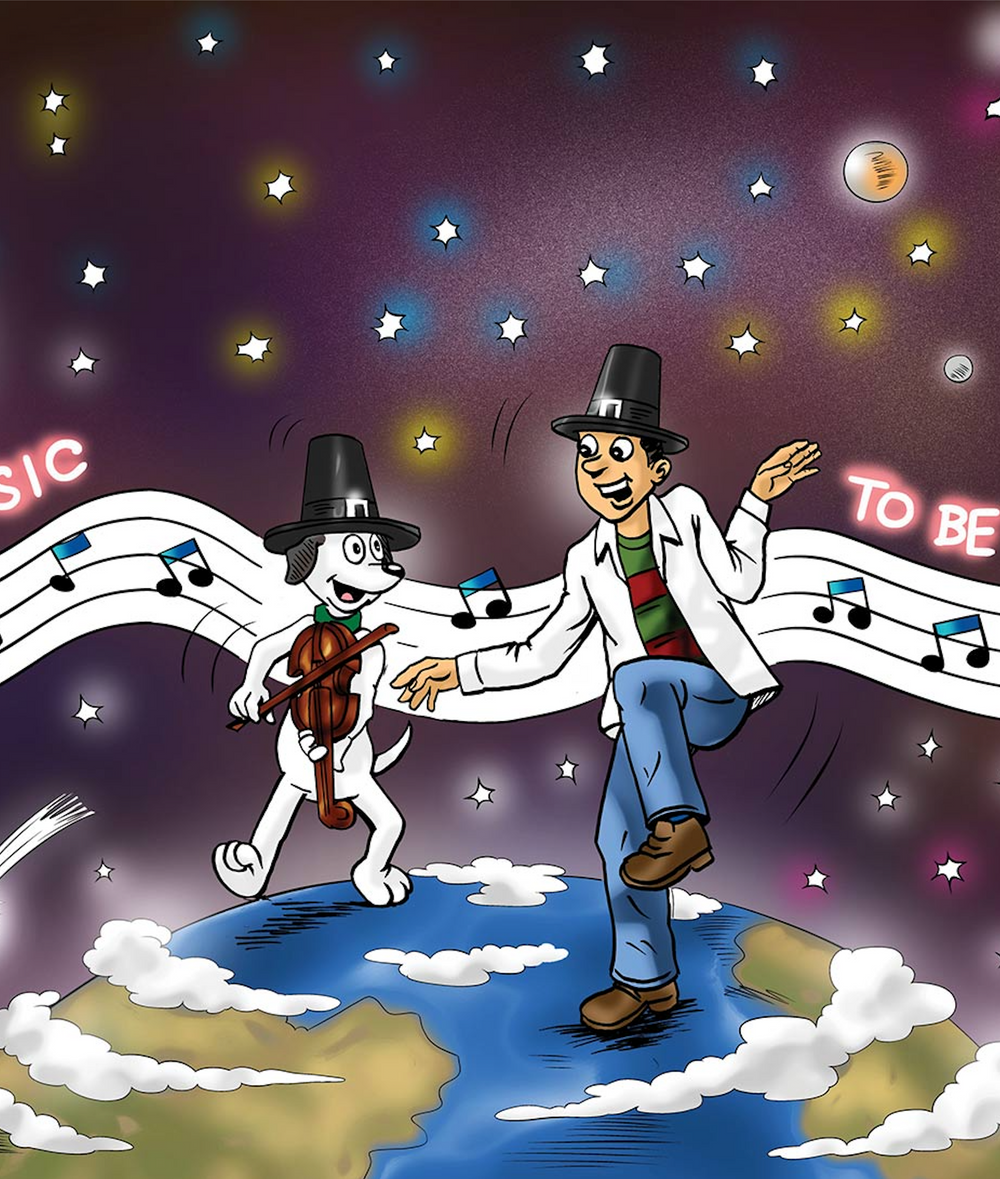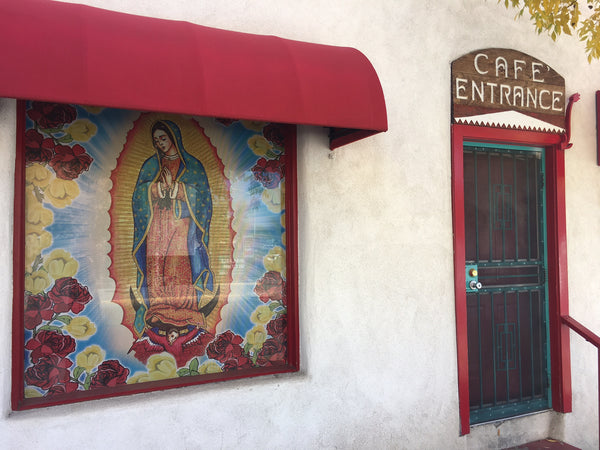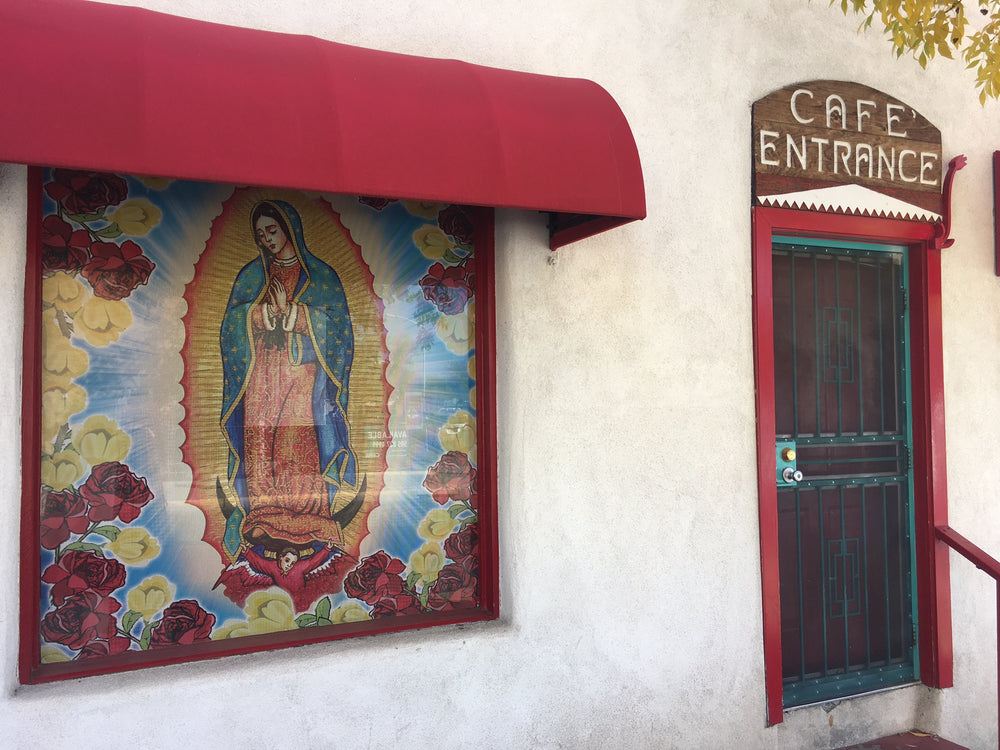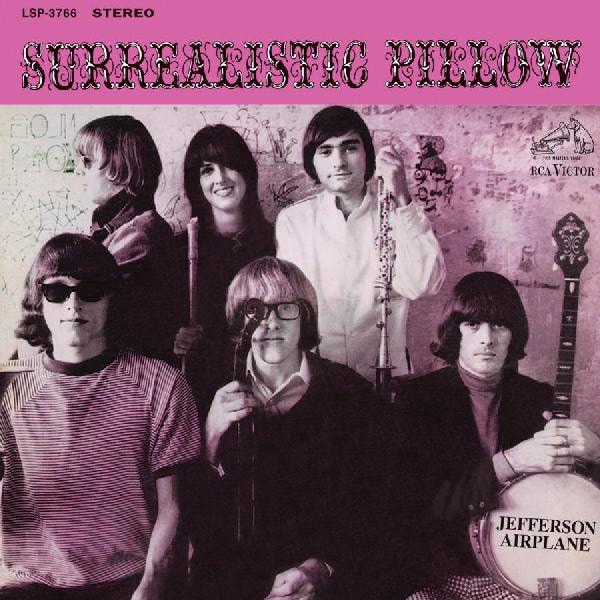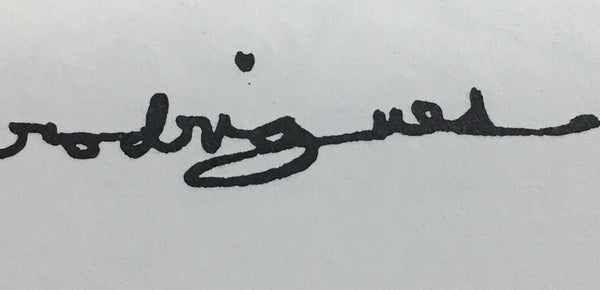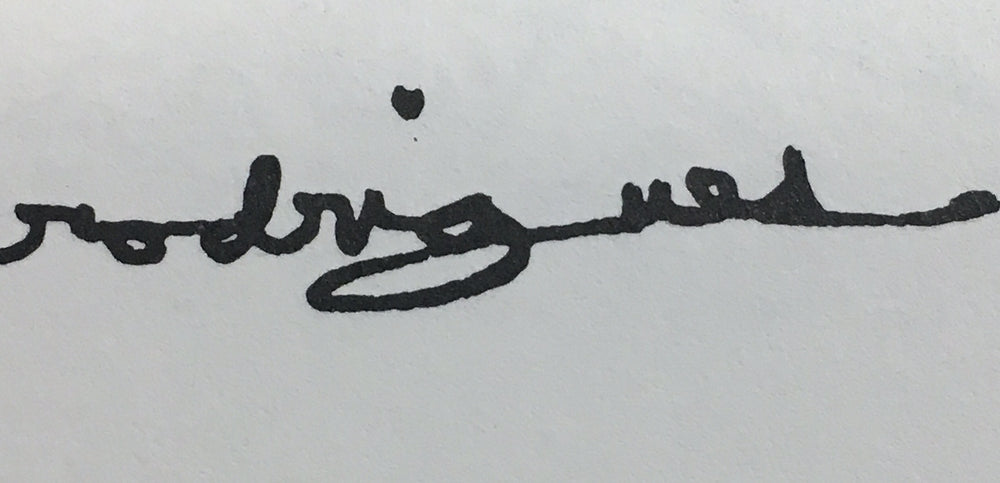[Part 1 of John Seetoo’s interview with recording engineer/producer Kavi Alexander appeared in Copper #45. Herewith, the conclusion.—Ed.]
J.S.: Some non-western music genres like South Asian and Turkish music are notable for having non-12 tone scales and finer semitone subdivisions. Is that part of the reason for your inclusion of artists like Ry Cooder, Martin Simpson, Taj Mahal and Jerry Douglas, along with Vishwa Mohan Bhatt, who all play slide guitar or dobro, on WaterLily releases?
K.A.: I record what I think would be inspiring… and yes, I am partial to certain instruments and their unique sounds… My approach has no fixed “game plan”, I go with the ocean’s currents… I, like my ancestors, navigate by the stars and in the ocean’s depths. I find mermaids, pearls, coral, conch shells and on its shores, ambergris… Things happen on the uncharted seas… For example, I had recorded Vishwa-ji twice, just him playing straight-ahead Hindustani music, before recording him with Ry for Meeting By The River.
The “River” recording came about through the efforts of my dear friend Rick Turner, the famous luthier, founding member of Alembic and now Renaissance Guitars, who was introduced to me by Grammy-winning bassist and record producer/engineerDan Schwartz of The Absolute Sound.
Dan was present at both my recordings of Vishwa-ji and loved his playing. Dan gave Rick a cassette and Rick was suitably impressed and played the tape for Ry, who in turn was equally impressed… Being interested in cross-cultural blends, I’d always liked Ry and his brew of Chicken Skin Music, so, it was only natural that we would try out a new chicken tandoori recipe! Hot and spicy… grilled to perfection in a clay oven… In the sleeve notes to A Meeting by the River I had quoted a line from Rumi about the mystical guide of the Sufis touching a grilled fish, which upon the magic touch, leaps off the grill and back into the holy Ganges river!
Well, that is what happened… Sometimes, it is neither pearls nor ambergris, but rather, breadfruit drifting on the ocean, thousands of miles from any paradise island… Sustenance nevertheless…
J.S.: In that same vein, would you perhaps consider pairing a Hawaiian slide player with some of your other artists in the future, given the slide guitar’s origins?
Yes, but after Gabby (Pahinui), there are…you know, none left. George Winston recently invited me to a concert. He then sent me a box of 30 Dancing Cat CDs [Dancing Cat is George Winston’s label that released an entire catalog of slack key and slide Hawaiian acoustic guitar music.—Ed.]. George had done an exemplary job! I certainly could not add to this excellent body of work.
I have 65 unreleased titles. I need to get these out. In the future, I want to concentrate on the “East-East” series of recordings. I’m the first to record Indian and Arab musicians, for example. Have you heard Saltanah with Simon Shaheen and Vishwa-ji? Simon is perhaps the finest oud player from the Arab world today. He lives here in the United States. A phenomenal musician. I had wanted very much to record Simon with Dr. L Subramaniam… I remember going to his house with Simon and going over the proposed project… Unfortunately, it never came to pass.
I have also made the very first recordings of Indian classical musicians, both Hindustani and Carnatic, collaborating with their Chinese counterparts. I have recorded Jie-Bing Chen (erhu) with Vishwa (Mohan veena), and Wu Man (pipa) with Lalguddi Krishnan (violin).
And then, the very first recordings of Persian and Indian musicians. I recorded Hossein Alizadeh, the undisputed master of both the tar and setar (both plucked lutes) in collaboration with the Carnatic virtuoso N. Ravikiran playing the gottuvadyam, an instrument similar to the Saraswati veena, but played with an ebony slide. (The above-mentioned Jie-Bing Chen, a virtuoso on the erhu was also recorded with Martin Simpson.)
Of the East/West recordings that inspired me, I love the very first such effort, recorded way back in 1965, when Tony Scott recorded with a shakuhachi and a koto player. Truly an outstanding album! Titled Music for Zen Meditation and Other Pleasures, and released by Verve, this recording really is a gem. The other East/West recording I love and consider a classic is Shakti’s second release, A Handful of Beauty. It’s out of this world. Absolutely. The musicianship from McLaughlin and Shankar are simply staggering.
For me, the ultimate record is Kind of Blue. Two days is all it took. Six men walk into the studio and Miles drew out a sketch of some ideas, and that was it. I aspire, strive to make, in my own way, my version of Kind of Blue. Every time I record, I attempt to make a Kind of Blue type of recording. Every time I turn on my stereo, I listen to Kind of Blue. I read an interview with Quincy Jones and he said that he did the same thing! He said he listened to this recording every day, and every time he listens to it, he learns something new. I mean, Quincy Jones has a profound grasp of music; yet this great musical mind says he learns something new every time! He says he gives copies of it to young people, “This is your orange juice.”
J.S.: A number of the artists that you’ve put together in these musical “mash-ups” like Wu Man, Jerry Douglas, Ry Cooder or Bela Fleck; they all are known for being able to bring their virtuosity into other genres of music. Do you have something in mind where you imagine certain combinations of artists that influenced whom you called for Water Lily projects?
K.A.: Well yes, I mostly conjure these collaborations, and I call the shots, but not all of the Water Lily projects were from the “fertile mind” of Kavi Alexander, no. For example, Meeting By the River was a situation that sort of fell into place. Bela Fleck, Jerry Douglas, and Martin Simpson were introduced to me by Rick Turner. I decided to pair them with Indian and Chinese musicians.
Taj Mahal was different. I met Taj long before I started Water Lily, when I was still in Sweden, working for an independent label called Amigo Music. By the way, the first commercial release I ever recorded was for Amigo; it was Art Blakey and The Jazz Messengers, featuring a very young Wynton Marsalis. I was meeting a lot of American jazz musicians then, and Larry Coryell was one of them, and I had proposed doing a recording him with Indian musicians. That was in ‘77 or ‘78, but it wasn’t until the late-90s that I recorded him with Dr. L. Subramaniam for From the Ashes.
Fascinoma with Ry and Jon Hassell was Ry’s idea. I suggested adding Ronu Majumdar, a formidable bansuri player. I had met Jon in the early ’90s, when Dan Schwartz came with him to a recording session of mine. In fact I did a short recording of Jon playing trumpet with Dan on electric bass… Jon is a Buddhist monk, a man of compassion and formidable musical depth and skill, with roots in the Eastman School of Music, Stockhausen, and Pandit Paran Nath…
J.S.: When recording Dr. L. Subramaniam, do you take a different approach between miking his acoustic vs his electric violin? How about when recording him with someone like Larry Coryell when you produced From the Ashes?
K.A.: No, I treat the amp Mani is playing through, like an extension of his violin, by placing it beside him. The mikes will be anywhere from 5 to 6 feet away, just as I would record him were he playing an acoustic violin. Mani had a Barcus Berry violin and liked playing through all sorts of colored little boxes! I tried very hard to get rid of these little devices, and had him play through a tube guitar amp. I finally was able to wean him of his “electric” fixation and got him to play acoustic violin on the last three recordings I did with him: Saraswati, From the Ashes, and the yet unreleased duet recording of him with Pandit V. G. Jog.
The other project that started in Sweden was with Taj Mahal. I met with Taj at his hotel after his concert and we spent all night talking about this project, of recording him with musicians from Madagascar and India. He really liked the idea. I had also met this beautiful lady, whom I had invited to Taj’s concert, and I had written her a poem about these fiddlers of Madagascar. I wrote it to express my love for her and perfumed it with sandalwood oil, as was my habit, but she never showed up for the concert! And guess who wound up with the poem? Taj Mahal! [Laughs.] Anyhow, I told him that I wanted to record him with Dr. L. Subramaniam and some fiddlers from Madagascar. When I called him in Hawaii in the 1990s, to speak about a recording project, the first thing he mentioned was that perfumed poem, which he still had! Finding musicians from Madagascar in the US was not likely, and flying them in was out of the question. So, it was just Taj with two Indian musicians, one rooted in the Hindustani tradition and the other in Carnatic, working their way through the blues, and gospel music.
While still domiciled in Sweden, around the mid-70s, the “audiophile” record labels started to pop up all over the place, offering mostly sub-standard music. I began calling all the American audiophile labels: Telarc, Delos, Mobile Fidelity, and so on, trying to convince them to record the extraordinary orchestras in Eastern Europe, for very reasonable sums of money. I had long phone conversations with Gary Georgie of MoFi, about shipping their half-inch, two-track Studer, all tricked out by John Curl, to me in Sweden, so that I could record with it Eastern Europe.
When I arrived in the US, I continued my crusade and actually showed up at Sheffield Lab and Delos… this is how the original Sheffield Lab recordings done in Moscow came about. It was my original idea. Doug wasn’t too keen on going to the USSR, but Lincoln’s girlfriend grasped the importance of this project and prevailed upon him to do it. I wrote the original letters and made all the phone calls to the Russians to set it all up. By the time I got to the US in 1981, Telarc had abandoned direct-to-disc recordings, gone completely digital, and was using Dr. Stockham’s Soundstream digital recorder, employing the three spaced omni mike technique. I convinced Jack Renner to allow me to make parallel analog recordings using coincident or near co-incident mike techniques. In 1983, I went to Atlanta and recorded the Atlanta Symphony using a pair of MILAB LC25 cardoid condenser mikes set up in the ORTF configuration, feeding a Nagra T Audio recorder running at 15 IPS.
I had heard the St.Petersburg Philharmonic lead by the legendary maestro Yevgeny Mravinsky, on a Melodia recording way back in Paris, and I was transfixed. A seed was planted… I dreamed of one day recording this great orchestra. When I approached the Russians on behalf of Sheffield Lab and asked for the St. Petersburg Philharmonic, they flat out refused! Instead they offered us the Moscow Symphony. Destiny had stepped in and saved the Saint Petersburg Philharmonic for me. Water Lily Acoustics is the very first American record company to record the St. Petersburg Philharmonic in Russia.
I had also initiated contacts in East Germany and Czechoslovakia, in the cities of Dresden, Leipzig and Prague respectively. I once had maestro Kurt Masur on the phone — all long distance calls paid for by Sheffield Lab! I also tried to initiate direct-to-disc projects with Dizzy Gillespie, Laura Nyro, Van Morrison, and even the Grateful Dead. The only projects that I initiated that came to pass were the Moscow Symphony recordings, and the Kodo Drummers.
Long before Chad, Chesky and Classic; at a point in time, when the only ones into re-issuing LPs were, MoFi and Nautilus, who, however employed solid-state mastering chains, I tried to convince Sheffield Lab to license orchestral recordings from RCA, and Mercury, and the recordings of Ustad Ali Akbar Khan and Manitas de Plata from Connoisseur Society, for release on high-quality vinyl, mastered by Doug Sax. All tube! All analog! I set up a meeting with Lincoln and some bigwig at RCA in NY. He told Lincoln that we were fools and that we were wasting our time!
In 1984, I got to start Water Lily Acoustics, and then again, it was a gift from God: I got to record, for my first auspicious release, the lion and the legend himself, Ustad Ali Akbar Khan! That recording was a gift from him. He saw that I was passionate and didn’t have any money, so he said, “Ok. I’ll record for you. No money. Put it out.”
From there, the Water Lily grew out of the mud below the still waters, always reaching for the sun… with help along the way from Apogee, Conrad-Johnson, AudioQuest, VPI, Vandersteen, and Cardas Audio, all of whom funded Water Lily recordings. I always try to push the envelope, both in terms of the music I recorded and the recording/mastering chain I employed. Water Lily Acoustics was the first record label to issue one-sided LPs which were pressed with the cryogenically frozen “father”. As Water Lily Acoustics grew, my friendship with Khan Sahib grew as well. He was like a father to me. For a young person lost at sea, to have that kind of mentor; a true master who takes interest in your pathetic life [laughs], it was an incredible gift! It is men like Ustad Ali Akbar Khan that I admire and look up to. You have to keep in mind that Ustad Ali Akbar Khan, Ustad Salamat Ali Khan, and Ustad Imrat Khan, had all been court musicians, attached to the courts of some of the great maharajas of India, who in turn, at one time, were among the richest men in the world. Thus, these master musicians carried themselves with great dignity and possessed courtly manners. They would come to my recordings dressed elegantly in silk, draped in priceless pashmina shawls, adorned with gold rings set with diamonds, pearls, coral and turquoise, and perfumed with sandalwood oil, or musk, or amber. They would sit on exquisitely woven Persian rugs, in a Catholic church with beautiful stained glass windows and embark on journeys deep into the night. And this unfolding is what I would try to capture.
I am drawn to men who live out in the desert, draped in camel-hair vestments, living on honey and locusts, men who are the firebrands of God, men such as the Aghori along the Ganges. Men who are naked of all guile and guise, men who seek and speak nothing but the Truth! Thus I seek artists who reflect this type of energy, such as the lion, Ustad Ali Akbar Khan.
In my work, I draw my inspiration from the men who had gone before me and paved the way, starting with Saint Blumlein, Arthur Haddy, Roy Wallace, and Kenneth Wilkinson of Decca, Bert Whyte of Everest, Lewis Layton of RCA, Bob Fine of Mercury, Emory Cook of Cook Records, Richard Brock of World Pacific, Jack Renner of Telarc, André Charlin of Disques Charlin, Georges Kisselhoff of Sarastro, Tryggvi Tryggvasson of Gale, Jean-François Pontefract of Harmonia Mundi (France), John Shuttleworth of Meridian Records, David B.Jones, Ron Malo, Alain Danielou and Deban Bahattacharya…
To these trailblazers, I bow.
J.S.: Ok, last questions. In a dream world, what type of projects would you undertake: what kind of music, venue, equipment, and so on?
K.A.: Since you mentioned the word ‘dream’, let me answer you first with a little poem from the Zen tradition: “I dreamt that I was a butterfly… but what if I were a butterfly dreaming that I was a man?”
I would like to go back to Russia to record the St. Petersburg Philharmonic, and to Budapest to record The Hungarian National Philharmonic. I love these two orchestras and the two great cities they are in. I love the people and culture in those respective countries. In both these cities I was treated royally! Maestro Yuri Temirkanov is one of the last of the old guard, a formidable conductor, who leads an outstanding orchestra. The late maestro Zoltán Kocsis, a young Turk, in comparison to Temirkanov, was possessed of different qualities and skills. It was an honor to record these great orchestras, led by these two luminaries.
My future recordings would be done using the Mytek Brooklyn A-to-D converter (32-bit word length/384kHz sampling rate), the unique “Audeze Array” (five closely spaced figure-of-eight planar ribbon mikes, placed in an arc) developed by the brilliant Dragoslav Colich (AKA Dr. C), in tandem with my version of the Decca Tree, which employs two cardioids and a centrally placed figure-of-eight stereo mike set in the MS configuration. Here again the mikes employed will be the same planar ribbon mikes designed by Dr. C of Audeze headphones fame, the Nikolai Tesla of audio. All the above mentioned Audeze mikes will be fed through Neve 511 mike preamps and mixed via a Neve 5059 mixer.
J.S.: Same equipment in churches?
K.A.: Of course! Oh, before we finish, I would like to aim this comment, directly at Bill Leebens: “Tell your Ma, tell your Pa, I am gonna send you back to Arkansas… To fetch and fire up your Hill Plasmatronics!!!”

Kavi with his version of the Decca tree. Microphones are custom Audeze planar ribbons.
[Thanks again to both John Seetoo and Kavi Alexander for this lengthy and fascinating conversation!––Ed.]


